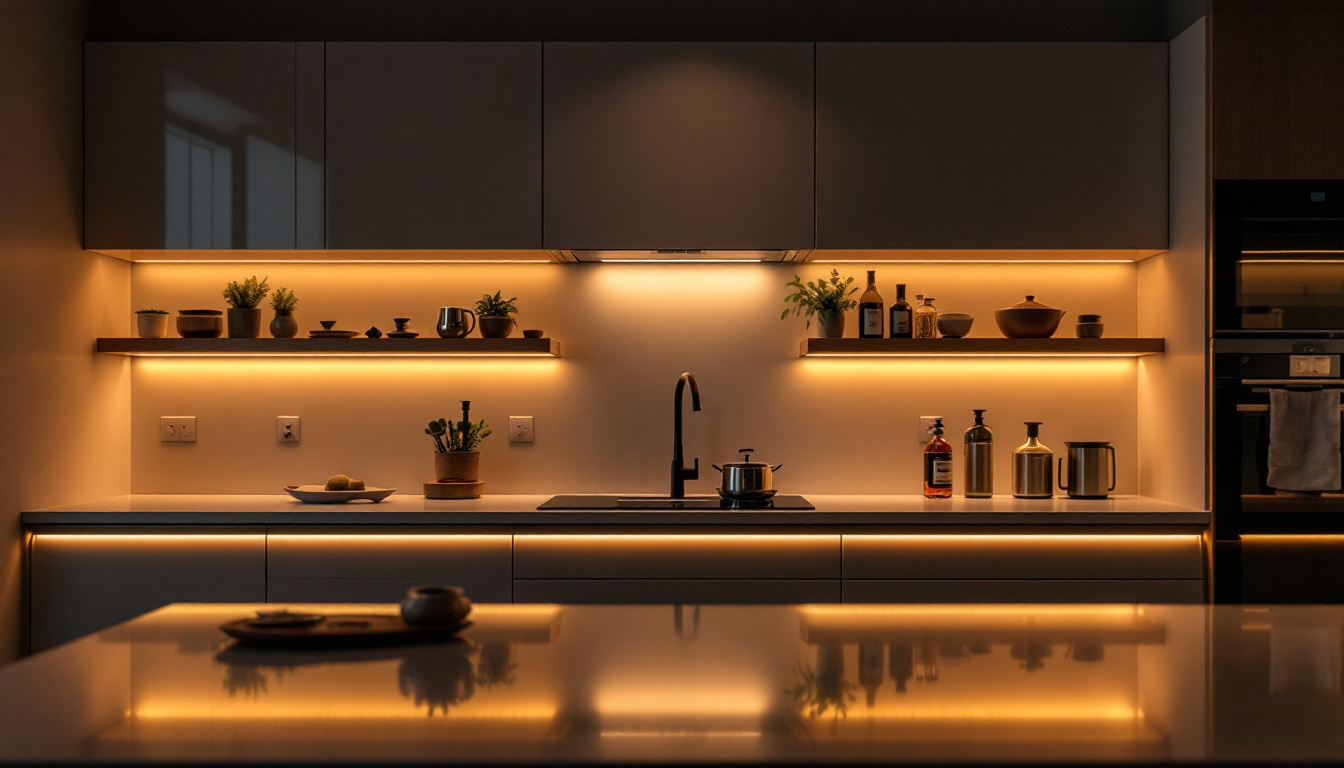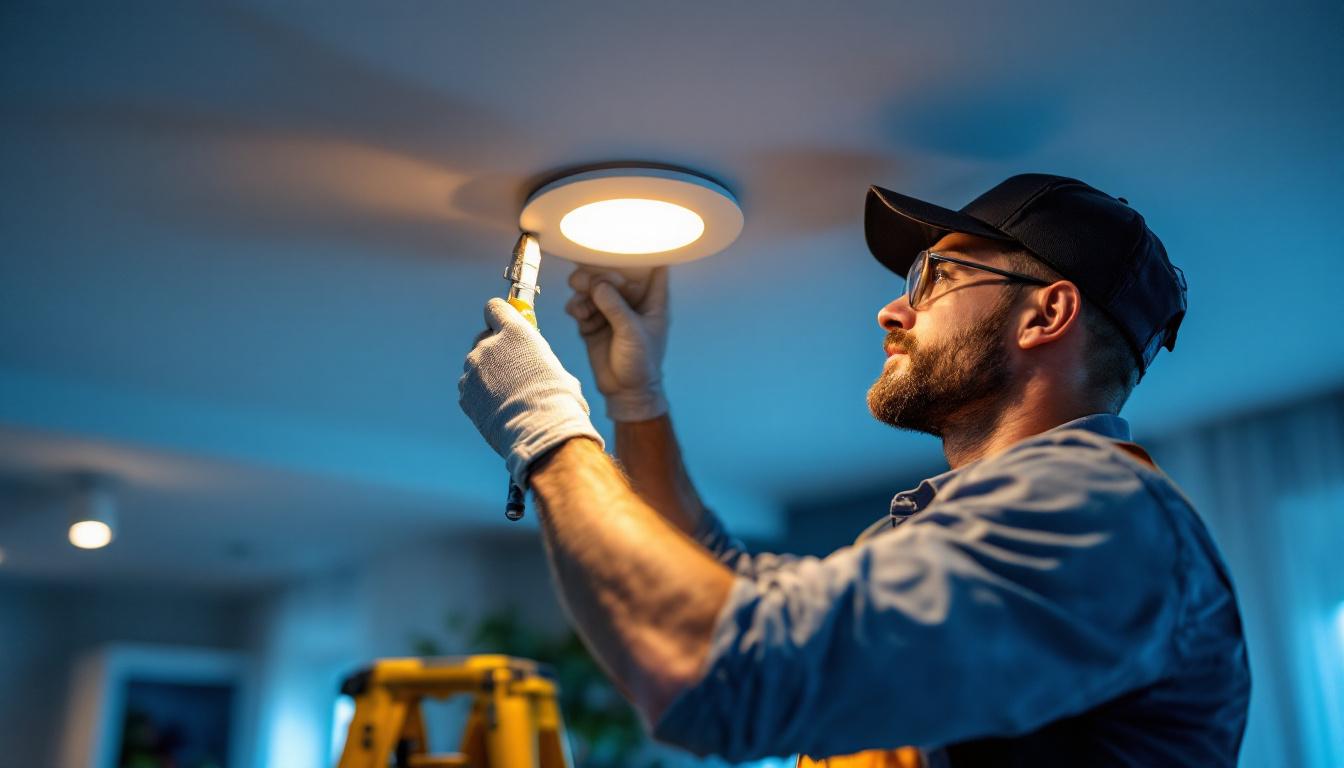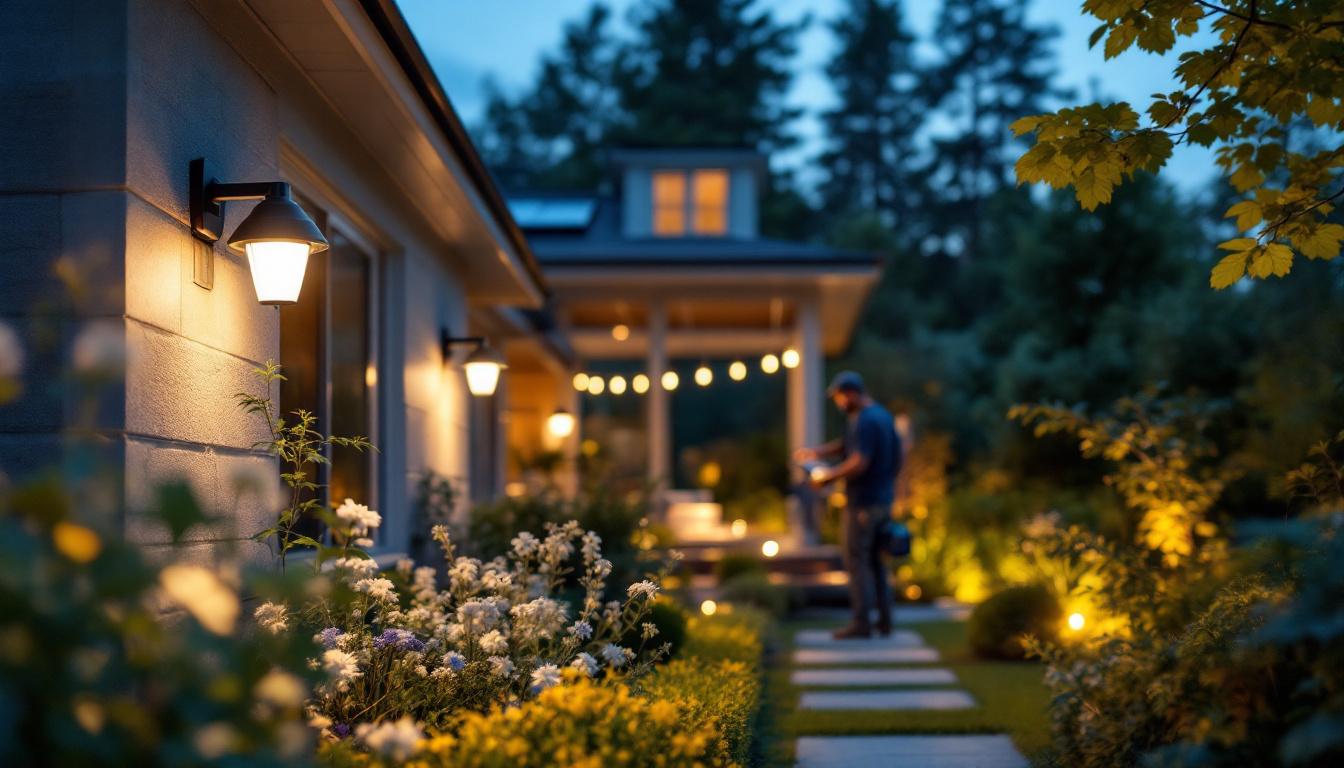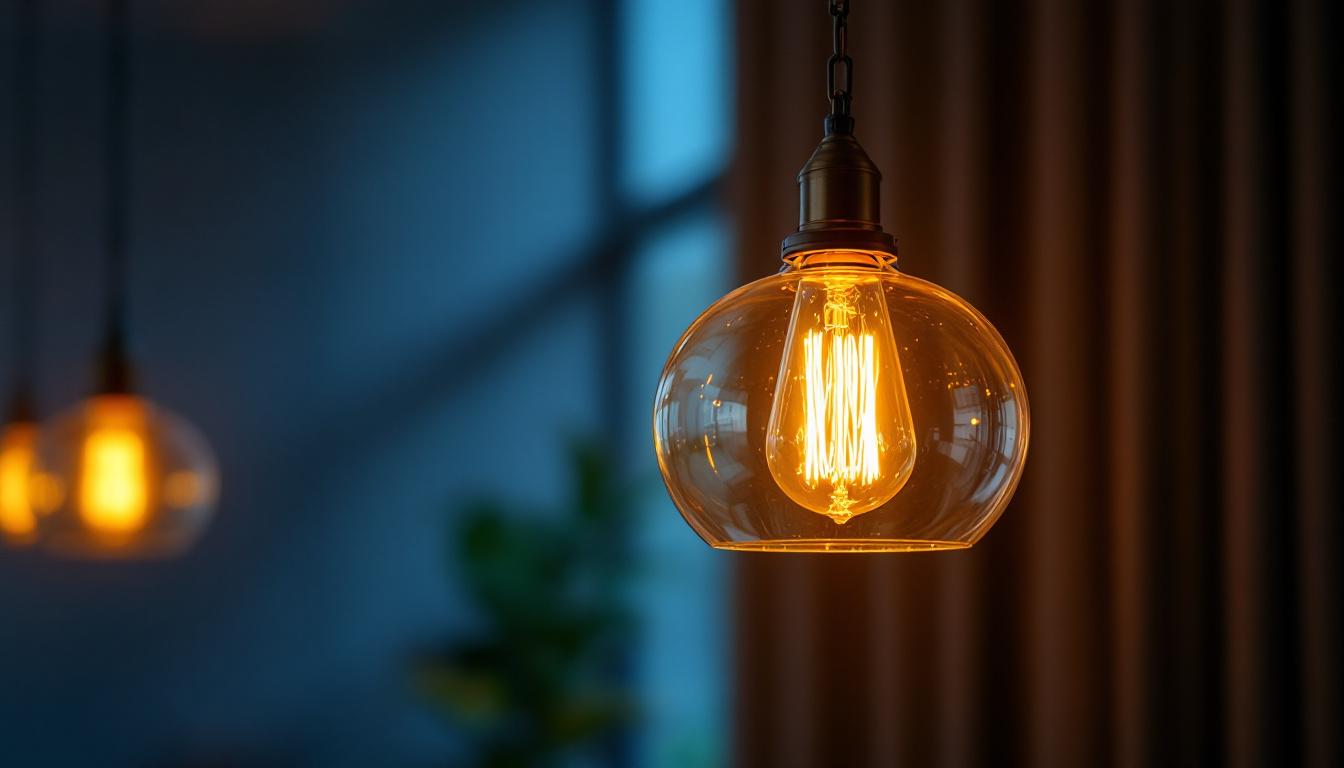
Undercabinet LED lighting has become a staple in modern kitchen and workspace design. As a lighting contractor, staying updated on the latest trends in this area is essential for providing clients with innovative and efficient solutions. This article explores current trends in undercabinet LED lighting, offering insights that can help contractors enhance their service offerings and meet client expectations.
In recent years, energy efficiency has emerged as a primary concern for homeowners and businesses alike. With increasing awareness of environmental issues and rising energy costs, clients are seeking lighting solutions that not only illuminate their spaces but also minimize energy consumption.
LED lights are inherently energy-efficient, using significantly less power than traditional incandescent or fluorescent bulbs. This trend has led to a growing demand for undercabinet LED lighting systems that maximize brightness while keeping energy costs low. Contractors should highlight the long-term savings associated with LED installations, as well as their reduced environmental impact. Furthermore, many LED products now come with extended lifespans, often lasting up to 25,000 hours or more, which means fewer replacements and less waste in landfills. This longevity not only benefits the environment but also provides peace of mind to clients who are looking for reliable and sustainable lighting solutions.
Another trend shaping the landscape of undercabinet LED lighting is the integration of smart technology. Home automation systems are becoming increasingly popular, and clients are looking for lighting solutions that can seamlessly integrate with these systems.
Smart undercabinet lighting can be controlled via mobile apps or voice-activated devices, allowing users to adjust brightness, color, and even scheduling. This capability not only adds convenience but also enhances energy savings by allowing users to turn off lights remotely or set them to operate only when needed. Lighting contractors should familiarize themselves with the various smart lighting products on the market, as well as the installation requirements for these systems. Offering smart lighting options can significantly enhance a contractor’s appeal to tech-savvy clients. Additionally, the integration of smart sensors that detect occupancy can further optimize energy use, ensuring that lights are only on when the space is in use, which is a compelling selling point for environmentally conscious consumers.
Clients are increasingly interested in the ability to customize the color temperature of their undercabinet lighting. The right color temperature can dramatically affect the mood and functionality of a space. For instance, cooler temperatures (above 4000K) are often preferred for task-oriented areas, while warmer temperatures (below 3000K) create a cozy atmosphere.
Lighting contractors should be prepared to offer a range of color temperature options, allowing clients to choose the best fit for their specific needs. Additionally, some advanced LED systems allow for dynamic color changing, which can be an attractive feature for clients looking to create versatile spaces. This flexibility not only enhances the aesthetic appeal but also allows for the lighting to be tailored to different activities, such as cooking, entertaining, or relaxing. Furthermore, educating clients about the psychological effects of color temperature can empower them to make informed decisions that enhance their living or working environments, ultimately leading to greater satisfaction with their lighting choices.
As design trends continue to evolve, minimalism has gained traction in interior design. Clients are increasingly favoring sleek, unobtrusive lighting solutions that enhance the overall aesthetic of their spaces without overwhelming them. This shift towards minimalism reflects a broader cultural movement that values simplicity, functionality, and the beauty of clean lines. Homeowners are now more inclined to create serene environments that promote relaxation and mindfulness, making thoughtful design choices that contribute to a sense of calm.
Undercabinet LED lighting is particularly well-suited for this trend, as it can be installed in a way that is both functional and visually appealing. Slim profiles and low-profile fixtures are becoming more popular, allowing for seamless integration into cabinetry. These lighting solutions not only illuminate work surfaces effectively but also create an ambient glow that enhances the overall mood of the room. Contractors should emphasize the aesthetic benefits of undercabinet lighting, showcasing how it can enhance the beauty of kitchens and workspaces while also serving practical purposes, such as improving visibility for cooking or crafting tasks.
Flexibility in installation is another trend that lighting contractors should consider. Clients often have unique requirements based on their specific spaces, and being able to offer customizable solutions can set a contractor apart from the competition. This adaptability is essential in today’s market, where personalized design is highly sought after, and clients appreciate the opportunity to tailor their environments to their individual tastes and needs.
Modular LED systems that allow for various configurations can be particularly appealing. These systems can be adjusted to fit different cabinet sizes and shapes, providing contractors with the versatility needed to meet diverse client needs. Furthermore, the ability to integrate smart technology into these lighting solutions adds another layer of customization, enabling clients to control their lighting through apps or voice commands. Understanding the installation nuances of these flexible systems can greatly enhance a contractor’s service offering, positioning them as forward-thinking professionals who are attuned to the latest advancements in lighting technology and design trends. By staying informed about these developments, contractors can ensure they are providing their clients with the most innovative and aesthetically pleasing options available in the market today.
In recent years, there has been a growing emphasis on health and well-being in the design of living and working spaces. Lighting plays a crucial role in this aspect, as it can affect mood, productivity, and overall health.
Research has shown that exposure to natural light and proper lighting conditions can enhance well-being. Undercabinet LED lighting can be designed to mimic natural light, providing a more pleasant environment for cooking, working, or socializing. Contractors should be aware of the importance of lighting quality and its impact on health, and they should be prepared to discuss these benefits with clients.
Human-centric lighting is a concept that focuses on the impact of light on human behavior and well-being. This approach emphasizes the importance of lighting that adjusts to the needs of the occupants throughout the day.
For undercabinet lighting, this could mean offering solutions that change in intensity and color temperature based on the time of day. For instance, warmer tones in the evening can help promote relaxation, while cooler tones during the day can enhance focus and productivity. Contractors who can provide human-centric lighting solutions will likely find a receptive audience among clients looking to create healthier living and working environments.
Durability and longevity are critical factors that contractors must consider when recommending undercabinet LED lighting solutions. Clients are increasingly looking for products that not only perform well but also stand the test of time.
LED lights are known for their long lifespan, often lasting up to 25,000 hours or more. This longevity translates into lower maintenance costs and fewer replacements, making them an attractive option for clients. Additionally, many LED products are designed to withstand various environmental factors, such as heat and humidity, particularly in kitchen settings. Contractors should emphasize these durability features when discussing options with clients.
In areas like kitchens, where moisture and dust can be prevalent, the importance of water and dust resistance cannot be overstated. Clients want assurance that their lighting solutions will hold up in challenging conditions.
Many modern undercabinet LED lights come with ratings for water and dust resistance, making them suitable for installation in kitchens and other areas where exposure to these elements is a concern. Contractors should be knowledgeable about these ratings and be prepared to recommend products that meet the specific needs of their clients’ environments.
While the initial investment in undercabinet LED lighting may be higher than traditional options, the long-term cost-effectiveness is a significant selling point. Clients are increasingly aware of the total cost of ownership, which includes energy savings, maintenance costs, and longevity.
Lighting contractors should be prepared to present a clear cost-benefit analysis to clients, illustrating how LED lighting can save money over time. This analysis can include comparisons of energy consumption, lifespan, and potential maintenance costs. Providing clients with this information can help them make informed decisions and feel confident in their investment.
Many regions offer incentives or rebates for energy-efficient lighting upgrades, which can further enhance the cost-effectiveness of undercabinet LED lighting. Contractors should stay informed about available programs and be ready to guide clients through the process of applying for these incentives.
By highlighting potential savings through rebates and incentives, contractors can make a compelling case for the adoption of LED lighting solutions. This not only benefits the client but also positions the contractor as a knowledgeable and resourceful partner in the lighting upgrade process.
As the demand for undercabinet LED lighting continues to grow, lighting contractors must stay informed about the latest trends and innovations in the field. By understanding the importance of energy efficiency, smart technology integration, design aesthetics, health considerations, and cost-effectiveness, contractors can provide clients with tailored solutions that meet their needs and preferences.
Embracing these trends not only enhances the contractor’s service offerings but also strengthens the relationship with clients, positioning them as trusted advisors in the ever-evolving world of lighting design. By staying ahead of the curve, lighting contractors can ensure their relevance and success in a competitive market.
Ready to elevate your lighting projects with the latest undercabinet LED trends? At LumenWholesale, we provide lighting contractors like you with the highest quality, spec-grade lighting products at prices that can’t be beaten. Say goodbye to local distributor markups and hello to our extensive selection that meets rigorous industry standards. With free shipping on bulk orders, you can trust that you’re getting premium lighting solutions at the best value — all without hidden fees. Don’t compromise on quality, affordability, or convenience. Visit LumenWholesale today and discover the perfect lighting for your next project.

Discover the best LED recessed light retrofit practices for optimal energy savings and enhanced lighting.

Discover essential tips and strategies for lighting contractors to seamlessly install solar coach lights.

Discover innovative cost-saving strategies for lighting contractors using outdoor propane lights.

Discover expert tips and insights on installing hanging light fixtures with chains, tailored specifically for lighting contractors.